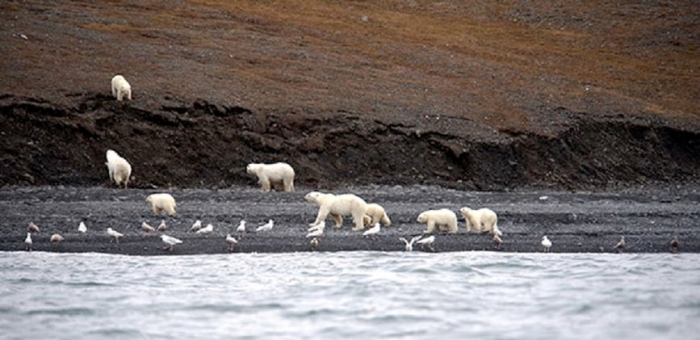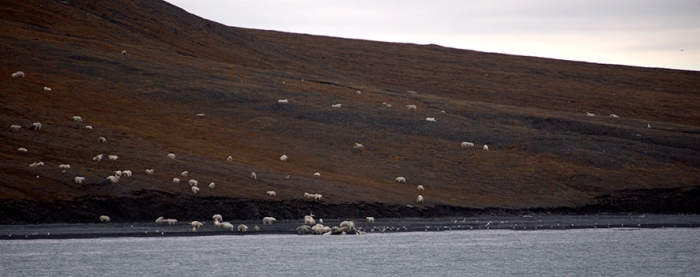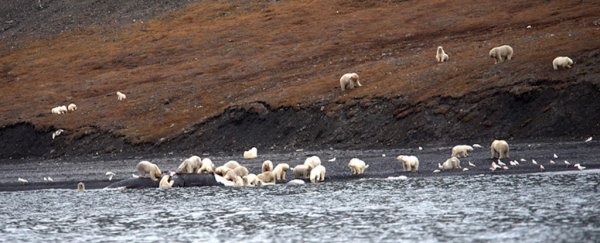The polar bear perched on a small wedge of ice has become a clichéd symbol for the way climate change is affecting animal life, but those bears still have some good food days, as indicated by an astonishing recent event in Siberia.
At least 230 of the animals converged on the carcass of a beached bowhead whale on the region's northern coast to feast on the bounty.
This may be a common occurrence in polar bear societies, but there aren't necessarily always people around to see it. This time, there were - a tourist group with Heritage Expeditions, led by founder Rodney Russ.
"Today has been one of those days I or anybody else with me will never ever forget," Russ wrote on his blog. "You had to live it to believe it, even now there are people pinching themselves to make sure it really happened."
 Alexander Gruzdev/Wrangel Island State Nature Reserve
Alexander Gruzdev/Wrangel Island State Nature Reserve
The bowhead whale can grow up to around 18 metres (59 feet), and can weigh over 91 tonnes (110 tons). That's a lot of food for hungry polar bears, and Russ's team counted 150 of all sizes, possibly attracted by the powerful smell in their sensitive noses - polar bears can smell a seal up to 32 kilometres (20 miles) away.
But there were more than that, according to the Wrangel Island State Nature Reserve, which conservatively estimated a number of 230 bears gathering for the banquet.
"There were male and female bears, some with little bears of all ages, two female bears with four little ones," the official press release said.
Polar bears aren't officially endangered, but their lives aren't all smooth sailing, either. According to the International Union for Conservation of Nature's Red List of threatened species, polar bears number just an estimated 26,000 individuals worldwide.
 Alexander Gruzdev/Wrangel Island State Nature Reserve
Alexander Gruzdev/Wrangel Island State Nature Reserve
They're not endangered, but the Red List does list them as vulnerable, as it mostly has for decades. The primary threat is their changing habitat.
Polar bears depend on sea ice to get access to their prey, yet sea ice loss is much more rapid than climate models predicted, the IUCN notes. It's forcing them into contact with humans as they move farther inland, and into risky and abnormal behaviours, such as cannibalism.
A warming climate could also increase the risk of disease and parasites, including both existing and new pathological threats. Climate change is the single most important threat to polar bear populations.
Notice of the rare event was sent to an international group of scientists who were working in the area on polar bear populations, so they were able to take thorough observations of the gathering.
These may be able to help further our understanding of polar bear ecology, which, according to the IUCN, is sadly lacking.
